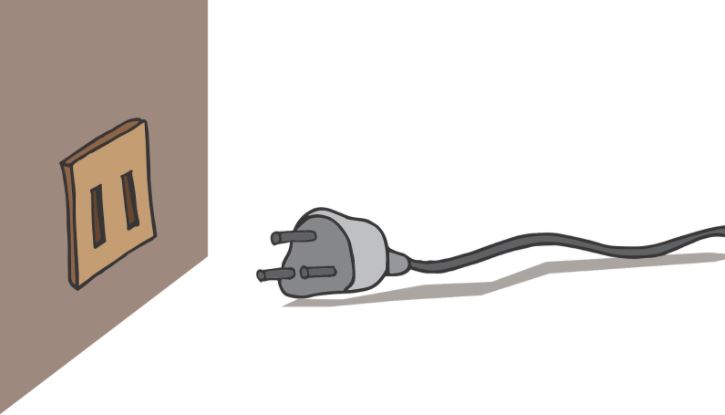 Electricity is not a force to mess around with. But it can certainly be subject to manipulation to a certain degree of safety and necessity.
Electricity is not a force to mess around with. But it can certainly be subject to manipulation to a certain degree of safety and necessity.
When it comes to safety, one of the most important practices in electrical is grounding. Electrical grounding is a necessity of ensuring the electrical routes do not break under load. But also to remain safe for individuals to use.
In this article, we will cover everything you need to know about this essential aspect of electricity.
So whenever you’re ready to learn about home electric wiring, keep reading and get your notes out. It’s going to get a little technical.
What Is Electrical Grounding?
Electrical grounding is a safety measure that’s often used in industrial settings. It involves the connection of an electrical device to the earth’s ground. Thus, if there are any power surges, they will be safely discharged through the ground instead of damaging equipment or harming people. Grounding provides protection against electric shock and from lightning strikes.
This occurs through dissipating electricity before it can get into the building’s wiring system. Grounding allows an electric current to be diverted from a live conductor, such as the human body. This diversion takes place through some type of insulated cable called the ground wire.
It is connected to the earth or any other conducting surface. It must have the potential for providing electrical resistance against the flow of electricity (such as water pipe and metal rod)
For example, if you are using an extension cord outside in the rain with its grounding plug unplugged, you will get shocked when touching both sides of the cord.
The grounding wire (wire with green casing) should always plug into an outlet. Even if it’s inside your home because there could still be power surges or lightning strikes. Resulting in damage while inside the building not allowing it to travel out safely.
In short, grounding is important for safety and it can also protect your electrical equipment from potential damage. Home electric wiring is a difficult science.
Who Invented Electrical Grounding?
In 1885, George Westinghouse hired Frank Conrad who invented the first practical electric arc lamp for use in street lighting. The invention of grounding is credited to him.
He published a paper about his discoveries and inventions including how they could be used with electrical systems in 1889. But it is also credited to Nikola Tesla by others.
Westinghouse asked Tesla’s advice on whether they should have ground connections between generators at Niagara Falls. There was no evidence that this would provide any benefit. But Tesla insisted that “By long experience, we know what lightning will do when two ungrounded conductors come together.”
Tesla also said, “A single conductor might suffice if wires were perfect”. This means the earth itself can serve as a kind of conductor. He eventually convinced them to install proper ground systems. The resulting power transmission efficiency was increased by 25%
The Benefits of Electrical Grounding
When it comes to electrical grounding, there are several benefits which not only prove the importance of it. But also the necessity of it in the majority of electrical applications. Here is a list of benefits to implementing electrical grounding:
- Faster response time
- Improved safety features
- Less power loss in electrical transmission and distribution systems
- Gives protection to the workers who are working on the system as well as people around them
Grounding also ensures that no matter what type of failure is occurring, it will be safely mitigated without any damage to other areas or devices in a home.
All these benefits from grounding can go away if an electrician does not properly ground their work. Resulting in potential fire hazards and catastrophic results.
Electrical grounding is so important because even though there might not be a direct benefit to having it installed. All these different side effects make up for those lack of perceived unearned benefits!
It’s never worth risking anything when you’re dealing with electricity. Even if it’s just for a little while. Read about electrical grounding here.
How Is Grounding Done?
Grounding can be subject to completion in different ways. But the most common method is to run grounding wire straight down into the earth. Then to install metal rods around its base so that they meet up with underground water pipes.
When water runs through these pipes, electricity cannot escape out of them as easily anymore. Protecting people who may need to touch those wires from getting electrocuted or harmed in any way!
There are other types of ground systems too that might not involve running power directly into an outlet. Some only have grounding wire at one end. But still, protect by connecting both ends somewhere else on their property line or roofline.
Others use lightning arrestors instead of direct connections. lastly, some use a grounding rod which has to be subject to installation in an area where the earth is close and moist like water.
Grounding rods bury usually twice as deep so they can reach down below frost level! They also need to make contact with “un-polluted” soil. Because if it becomes contaminated, the ground won’t be able to conduct electricity.
Soil can become polluted with minerals, salts, and other materials. These are mixed in from the environment or even as a result of chemical spills!
There’s also been research done where it was discovered that some homes were built on concrete slabs. Why is this important? Well, instead of natural dirt, concrete renders them incapable of being grounded.
The reason for this is because when you have clay soil, the resistance between your body potential and earth voltage goes down drastically. Think about how dampness would make an electric shock weaker if you aren’t wearing shoes?
To get around this issue, building codes require most new construction projects to install grounding rods. They also use lightning arrestors but there are still many that are not grounded.
Best Practices for Grounding Home Electric Wiring
Install a proper ground rod in the earth, preferably at least six feet deep, and make sure it is properly connected to your home’s plumbing piping or water meter; this should be done by a licensed electrician.
Make sure all metal parts of your building bond together with heavy-duty wire that has insulation rated up to 600 volts (or higher). So when you’re rewiring or replacing any old wiring, make sure to call out a licensed electrician!
Insulate exposed wires so they don’t carry electricity outside of their designated area. This includes ungrounded outlets and receptacles on walls, lighting fixtures, etc.; use plastic spacers to keep the insulation in place.
Install ground fault circuit interrupters (GFCIs) on any circuit that is 120 volts or less and near water, for example, a bathroom sink; these devices prevent electric shocks from occurring when someone becomes wet while using an appliance like a toaster oven.
Test your electrical system yearly with a qualified professional who has experience testing homes.
Make sure you have enough power sources available at all times by installing multiple breakers/circuit breakers throughout your house so that if one fails it doesn’t take out everything else! Two hundred amp service will supply adequate power to most appliances and other electronics in a home without overloading it too much.
Use GFCIs for all kitchen outlets, including the ones that are not under sinks.
Install ground rods in your yard to help reduce voltage peaks and power fluctuations during a storm.
For outdoor lighting, install lights with photocells (sensors) or timers so they turn off when it becomes dark outside. This is also good practice if you want to keep an eye on things like garden plots without having them stay lit up at night as well!
Household Improvements Done Right
Now that you know about home electric wiring, you are well on your way to ensure safety in your home. As long as you ensure grounding is performed by an experienced specialist, there is no reason for you to fear the safety of your family and loved ones.
Grounding can be difficult to optimize, but when done right, it works great as it’s meant to be. So don’t hesitate to hire the best or to learn as much as possible.
If you’re interested in a variety of other household improvement content, check out some of our recommended articles on the sidebar. We host a variety of articles from electrical to landscape to interior design.




